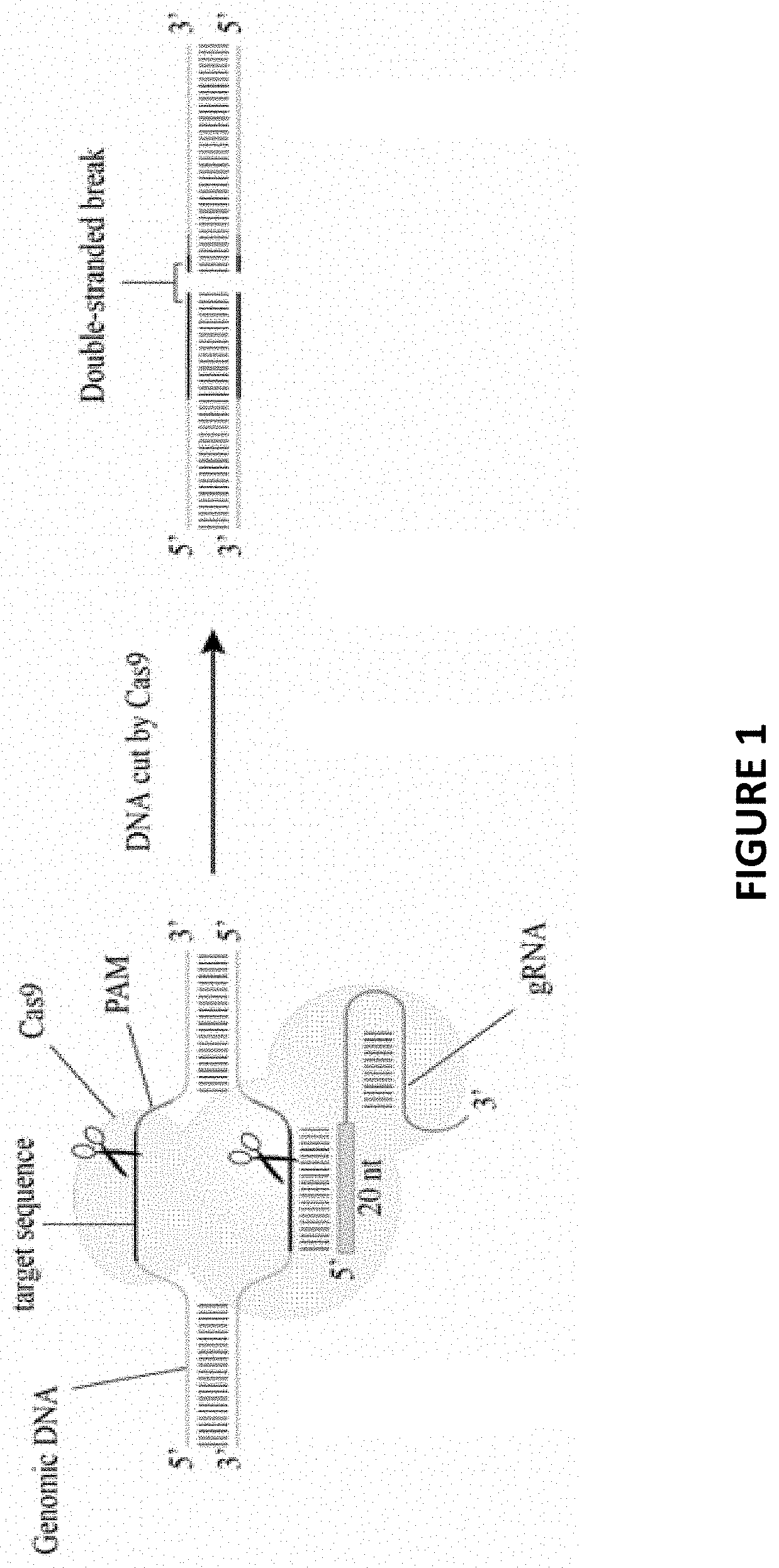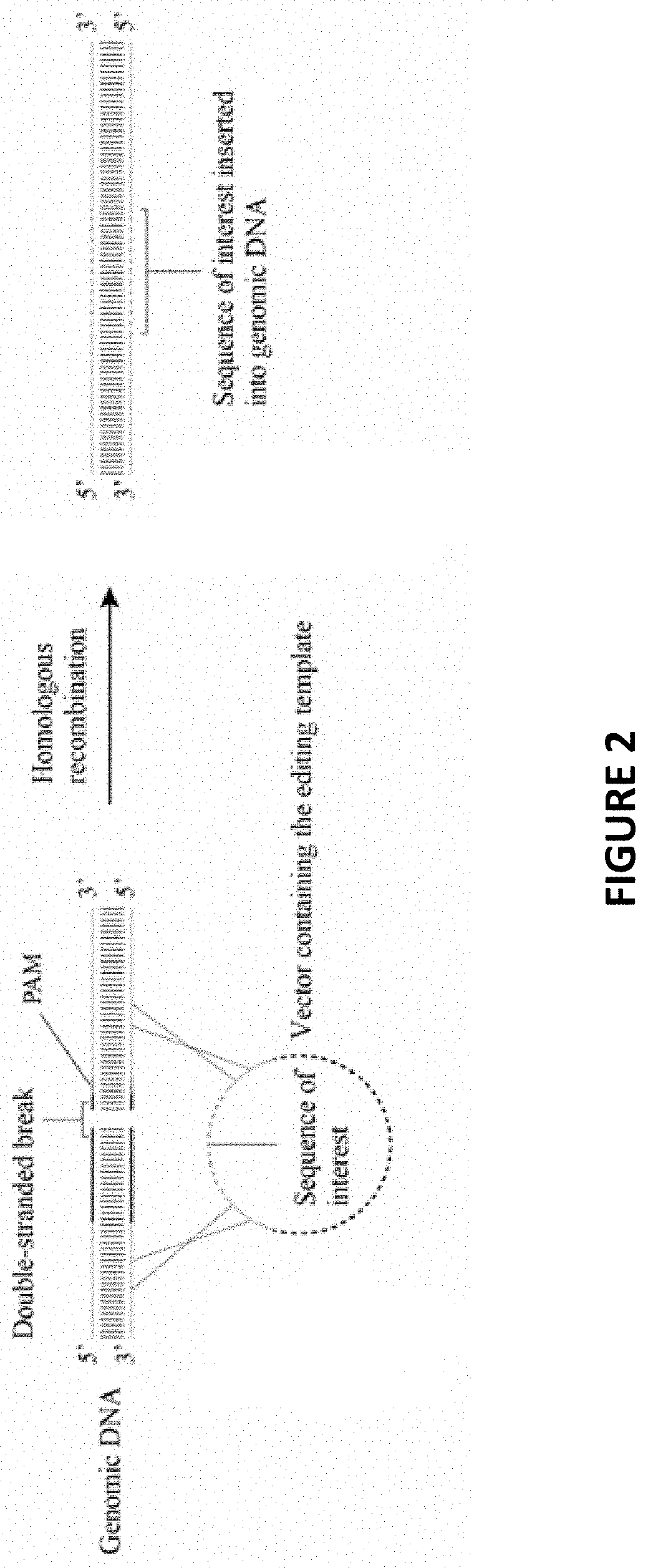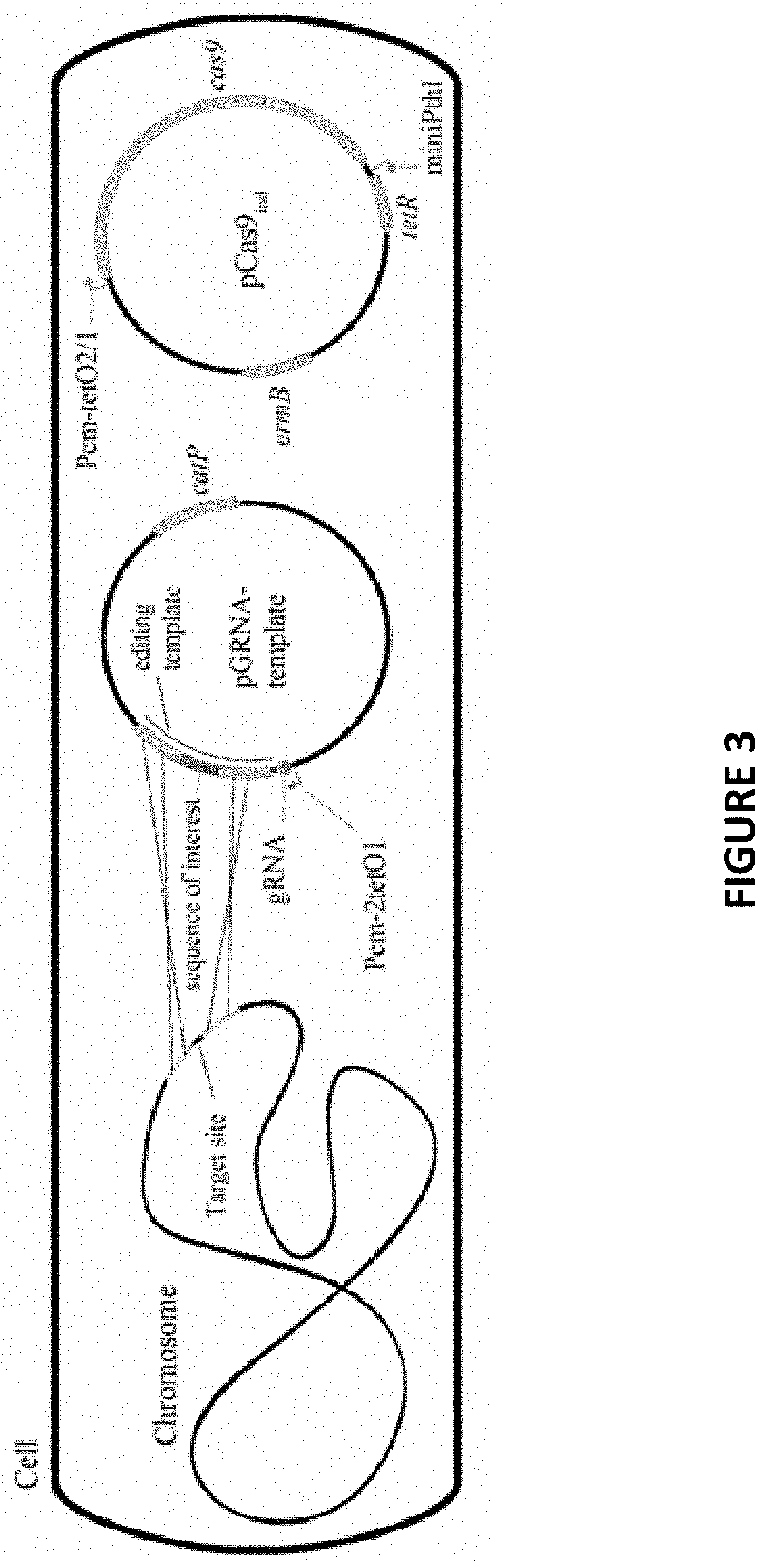Optimized genetic tool for modifying clostridium bacteria
a technology of clostridium bacteria and genetic tool, which is applied in the field of optimizing genetic tool for modifying clostridium bacteria, can solve the problems of difficult genetic modification of microorganisms, long knowledge of bacteria belonging to the genus i>clostridium /i>, and high toxicity of cas9, so as to facilitate the transformation of clostridium bacteria, improve the maintenance within said bacteria, and facilitate the effect of bacteria transformation
- Summary
- Abstract
- Description
- Claims
- Application Information
AI Technical Summary
Benefits of technology
Problems solved by technology
Method used
Image
Examples
example 1
Materials and Methods
Growing Conditions
[0274]C. acetobutylicum DSM 792 was grown in 2YTG medium (16 g / l tryptone, 10 g / l yeast extract, 5 g / l glucose, 4 g / l NaCl). E. coli NEB10B was grown in LB medium (10 g / l tryptone, 5 g / l yeast extract, 5 g / l NaCl). The solid media were made by adding 15 g / l agarose to the liquid media. Erythromycin (at concentrations of 40 or 500 mg / l respectively in 2YTG or LB medium), chloramphenicol (25 or 12.5 mg / l respectively in solid or liquid LB) and thiamphenicol (15 mg / l in 2YTG medium) were used when necessary.
Use of Nucleic Acids
[0275]All enzymes and kits used were done so according to the suppliers' recommendations.
Plasmid Construction
[0276]The pCas9acr plasmid (SEQ ID NO: 23), shown in FIG. 4, was constructed by cloning the fragment (SEQ ID NO: 1) containing bgaR and acrIIA4 under the control of the Pbgal promoter synthesized by Eurofins Genomics at the SacI site of the pCas9ind vector (Wasels et al., 2017).
[0277]The pGRNAind plasmid (SEQ ID NO: 8...
example 2
Materials and Methods
Growing Conditions
[0295]C. beijerinckii DSM 6423 was grown in 2YTG medium (16 g / l tryptone, 10 g / l yeast extract, 5 g / l glucose, 4 g / l NaCl). E. coli NEB 10-beta and INV110 were grown in LB medium (10 g / l tryptone, 5 g / l yeast extract, 5 g / l NaCl). The solid media were prepared by adding 15 g / l agarose to the liquid media. Erythromycin (at concentrations of 20 or 500 mg / l respectively in 2YTG or LB medium), chloramphenicol (25 or 12.5 mg / l respectively in solid or liquid LB), thiamphenicol (15 mg / l in 2YTG medium) or spectinomycin (at concentrations of 100 or 650 mg / l respectively in LB or 2YTG medium) were used if necessary.
Nucleic Acids and Plasmid Vectors
[0296]All enzymes and kits used were used according to the suppliers' recommendations.
[0297]The colony PCR tests followed the following protocol:
[0298]An isolated C. beijerinckii DSM 6423 colony was resuspended in 100 μL of 10 mM Tris, pH 7.5, 5 mM EDTA. This solution is heated to 98° C. for 10 min without ag...
PUM
| Property | Measurement | Unit |
|---|---|---|
| concentration | aaaaa | aaaaa |
| concentration | aaaaa | aaaaa |
| concentration | aaaaa | aaaaa |
Abstract
Description
Claims
Application Information
 Login to view more
Login to view more - R&D Engineer
- R&D Manager
- IP Professional
- Industry Leading Data Capabilities
- Powerful AI technology
- Patent DNA Extraction
Browse by: Latest US Patents, China's latest patents, Technical Efficacy Thesaurus, Application Domain, Technology Topic.
© 2024 PatSnap. All rights reserved.Legal|Privacy policy|Modern Slavery Act Transparency Statement|Sitemap



